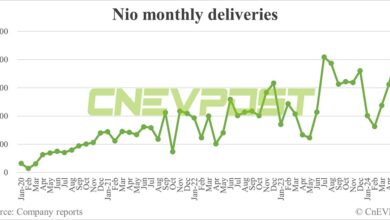New Pricing Strategies and Charging Standards Are Crucial to Mitigate Profitability Challenges in the EV Sector

Recent fluctuations in Tesla’s quarterly earnings and a general moderation in the growth of electric vehicles (EVs) in the U.S. market have raised concerns about the profitability challenges facing the EV industry. Despite an initial explosive growth, the increase in market share is showing signs of slowing down. These shifts occur amidst a broader context of global supply chain issues and changing consumer preferences, which may significantly affect the future landscape of electric mobility.
As stakeholders seek to understand these dynamics, what are the underlying reasons for the profitability challenges facing the U.S. EV industry?
In an Experts Talk episode, Dr. Dave Tuttle, a Research Associate at the Energy Institute at the University of Texas at Austin, called for industry-wide standardization of charging infrastructure. This, he argued, would reduce consumer hesitancy and accelerate widespread adoption of electric vehicles (EVs). Dr. Tuttle further emphasized the need to address vehicle affordability. He suggested that automakers should focus on scaling production and leveraging economies of scale to bring down costs.
Key Insights from Dr. Tuttle:
- Moderating Growth: Although the EV market continues to grow, the rate of increase in market share has decreased from previous years. This moderation might signal a maturing market or emerging hesitations among consumers.
- Charging Standards Transition: The shift towards a universal charging standard, like Tesla’s, could be causing potential buyers to delay purchases. This transition period may temporarily slow down sales as consumers wait for more standardized options.
- High Vehicle Costs: The rising costs of all vehicles, exacerbated by supply constraints and inflation, have pushed the average transaction price significantly higher than pre-pandemic levels, affecting affordability and potentially reducing consumer willingness to invest in new technology like EVs.
- Supply Chain Issues: Previous supply constraints led to inflated prices across the auto industry, impacting the affordability of EVs. As inventories rebuild, there could be an opportunity to adjust pricing strategies.
- Consumer Decision Factors: Personal anecdotes, like Dr. Tuttle’s own considerations when purchasing a new EV, illustrate the complex decision-making process of consumers which includes factors like vehicle longevity, upcoming technological standards, and overall vehicle costs.
Article written by Sonia Gossai




